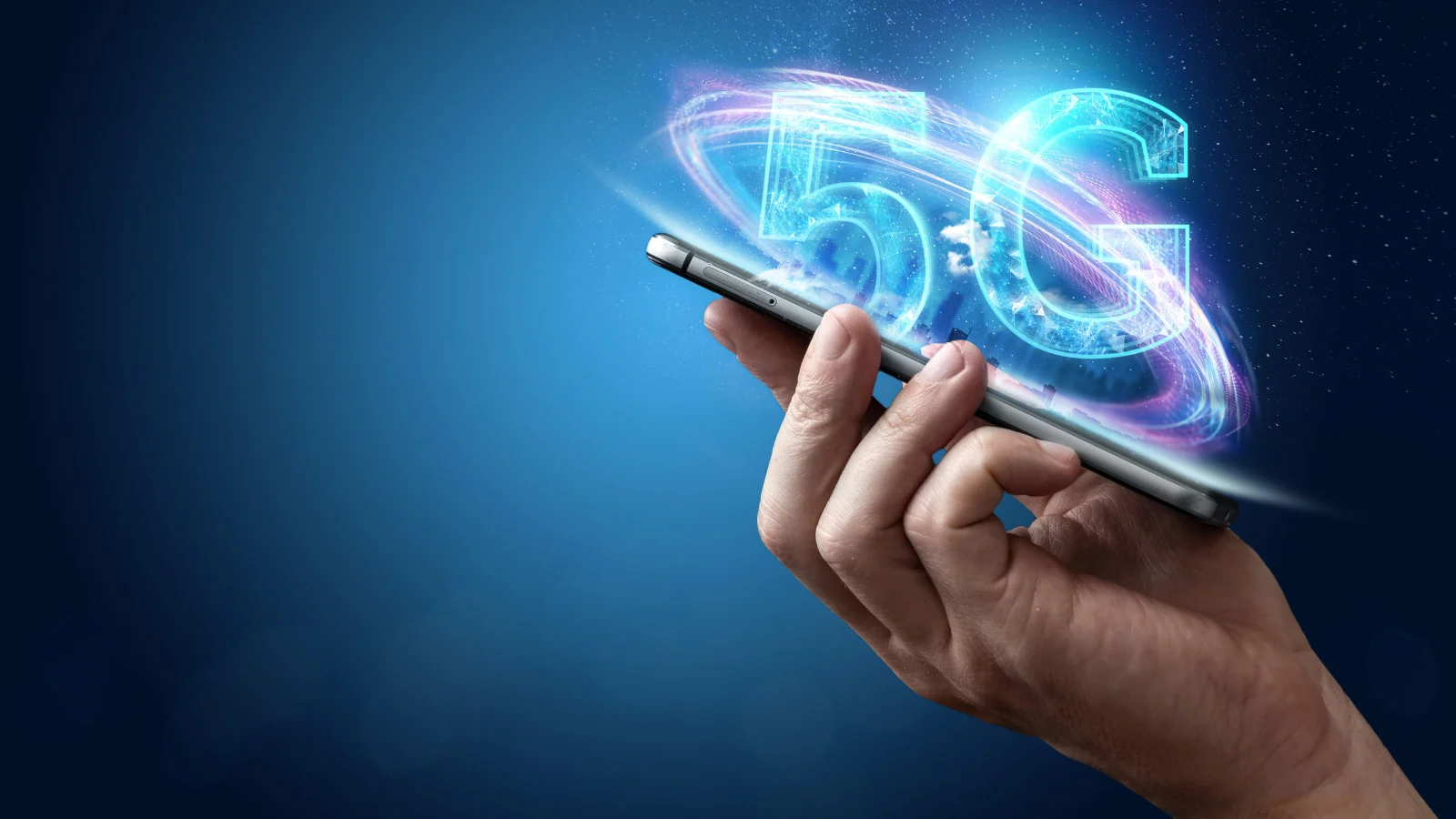
Like other cellular networks, 5G networks use a system of cell sites that divide their territory into sectors and send encoded data through radio waves. Each cell site must be connected to a network backbone, whether through a wired or wireless backhaul connection. 5G changes the way data is encoded, and offers many more options to carriers in terms of airwaves to use.
5G networks use a type of encoding called OFDM, which is similar to the encoding that 4G LTE uses. The air interface is designed for much lower latency and greater flexibility than LTE, though.
The new system opens up “high-band,” short-range airwaves that didn’t work with 4G technology. But 5G can run on any frequency, leading to three very different kinds of 5G experiences—low, middle, and high.
5G isn’t much faster than 4G on the same old radio channels. Instead, the 5G spec lets phones use much wider channels across a broader range of frequencies. The carriers and the FCC have to make those wider channels available, though, and that’s where they’ve largely fallen short.
With 4G, you can combine up to seven, 20MHz channels to use a total of 140MHz of spectrum. Most of the time, though, phones are using 60MHz or less.
With new phones in low- and mid-band 5G, you can combine three 100MHz channels for 300MHz usage—and stack several more 20MHz 4G channels on top of that. In high-band 5G, you can use up to eight 100MHz channels. But if you don’t have the airwaves available, you don’t get the speeds.
Carriers can also flexibly share channels between 4G and 5G using dynamic spectrum sharing (DSS). DSS makes the walls between 4G and 5G channels movable, so carriers can split channels between 4G and 5G based on demand. That’s what Verizon has been using for its “nationwide” 5G. It doesn’t free up any new airwaves for 5G—it just reuses odds and ends of 4G—so we haven’t seen DSS 5G offer much better performance than 4G.
Low-band 5G operates in frequencies below 2GHz. These are the oldest cellular and TV frequencies. They go great distances, but there aren’t very wide channels available, and many of those channels are being used for 4G. So low-band 5G is slow. It acts and feels like 4G, for now. Low-band 5G channels are from 5MHz in width (for AT&T) up to 20MHz (for T-Mobile), so you can see they aren’t roomier than 4G. If your phone’s network indicator just says “5G,” you are on low-band.
Complicating things, AT&T and T-Mobile low-band phones sometimes show 5G icons when they aren’t even using 5G, making it hard to tell any difference.
Mid-band 5G is in the 2 to 10GHz range. That covers most current cellular and Wi-Fi frequencies, as well as frequencies slightly above those. These networks have decent range from their towers, often about half a mile, so in most other countries, these are the workhorse networks carrying most 5G traffic. Most other countries have offered around 100MHz to each of their carriers for mid-band 5G.
There are several different slices of mid-band being used in the US. Some of them are controversial; the airline industry has been complaining about anything from 3.7 to 4.0GHz as being too close to the frequency of their radio altimeters, which run at 4.2 to 4.4GHz. But that’s not the only mid-band frequency we’re using! T-Mobile’s “ultra capacity” 5G network runs on channels of up to 100MHz of (Opens in a new window)2.5GHz. AT&T and Verizon just introduced new mid-band networks based on the “C-band,” at 3.7 to 3.8GHz. Later this year, AT&T, T-Mobile, and Dish will all turn on more coverage at 3.45 to 3.55GHz. If your phone’s status indicator says “5G UC,” “5G UW,” or “5G+,” you are on mid-band or high-band. There’s no easy way to tell the difference between mid-band and high-band on your phone.
High-band 5G, or millimeter-wave, is the really new stuff. So far, this is mostly airwaves in the 20-100GHz range. These airwaves haven’t been used for consumer applications before. They’re very short range; our tests have shown about 800-foot distances from towers. But there’s vast amounts of unused spectrum up there, which means very fast speeds using up to 800MHz at a time. We’ve seen speeds over 3Gbps on Verizon’s high-band network, which it calls “ultra wideband.” Unfortunately, we found in our Fastest Mobile Networks 2021 tests that Verizon’s network only showed around 3% coverage in the cities we surveyed. AT&T and T-Mobile also have some high-band. They generally describe it as only for high-density hotspots, like college campuses and football stadiums.
High bands have been used before for backhaul, connecting base stations to remote internet links. But they haven’t been used for consumer devices before, because the handheld processing power and miniaturized antennas weren’t available. Millimeter-wave signals also drop off faster with distance than lower-frequency signals do, and the massive amount of data they transfer will require more connections to landline internet. So cellular providers use many smaller, lower-power base stations (generally outputting 2–10 watts) rather than fewer, more powerful macrocells (which output 20–40 watts) to offer the multi-gigabit speeds that millimeter-wave networks promise. Because of the very fast drop-off, the waves are quite weak when they get to you.
In many major cities, the carriers installed these “small cells” to increase 4G capacity starting in 2017. In those cities, they just need to bolt an extra radio onto the existing site to make it 5G. There’s a struggle going on elsewhere, though, where carriers are having trouble convincing towns to let them add small cells to suburban neighborhoods. That’s similar to previous struggles over establishing cellular service at all in many of these towns.
Verizon is trying to enhance its high-band 5G coverage by making deals with companies that create 5G extenders and repeaters, such as Pivotal Commware.
Click here to read the full article from PCMag.